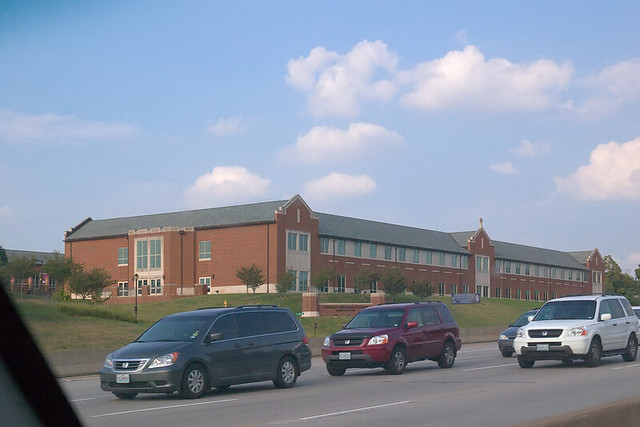
A view of the school from Interstate 64-Highway 40.
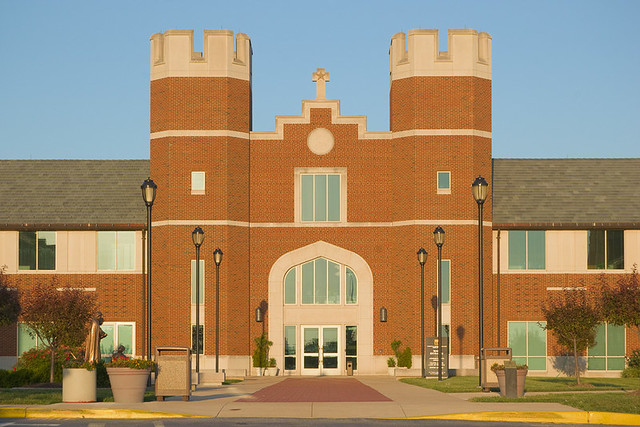
From the school's website:
Christian Brothers College High School was founded in 1850 when the first school was established at Eighth and Cerre Streets in downtown Saint Louis. By 1855, the school became the first establishment of the Brothers to function on the collegiate level when the state of Missouri granted Christian Brothers College a college charter. This would be the first college of the Brothers in America.The school was designed by Mackey Mitchell Architects.
Rapid industrialization following the Civil War forced the school to build a new facility. The Brothers purchased 30 acres of land for $50,000 near the intersection of Kingshighway and Easton (now Dr. Martin Luther King Drive.) By 1882, the new school was ready for students and by 1889, CBC had established a reputation as one of the finest schools in Saint Louis.
The new campus was quite opulent. Its five-story structure contained a library with more than 40,000 volumes and manuscripts, four grand parlors and reception rooms, a 1,000 seat auditorium, and a steam elevator. But in October 1916, a fire ravaged the building and insurance at the time was insufficient to cover the estimated $275,000 in damage. The property was sold, and with the help of the Saint Louis Archdiocese, another campus was established on what was then farmland in Clayton, Missouri. That campus opened in 1922 and would serve as the school’s home for more than 82 years. Given the age of the building, inadequate parking, lack of practice fields and space considerations, the Board of Directors made the decision to build a new facility on land donated by a prominent alumnus.
In September 2003, CBC opened its fourth campus near the intersection of I-270 and I-64/U.S. 40 – one of the heaviest traveled intersections in the metropolitan area.
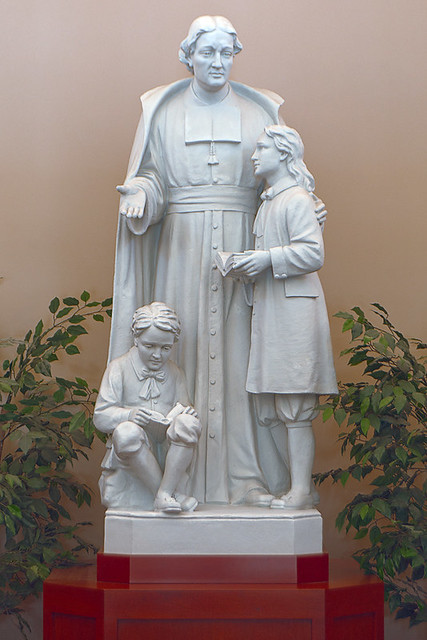
Statue of Saint Jean-Baptiste de la Salle with children, located in the library.
Born in Reims, France, in 1651, Saint de la Salle founded the modern school system. His age was a time of absolutism and heresy, and all of society suffered. But his involvement with schooling was not according to his own plan, but rather was a charitable response to the evil he saw daily. According to the Catholic Encyclopedia, when God moved him to start his mission:
Jansenism had gained the ascendancy in France and spread broadcast its pernicious doctrines; it fostered internal dissensions and promoted Gallicanism, to the great detriment of the Faith and of loyalty to the Holy See. In the social order, a spirit of exaggerated independence was abroad, condemning authority or thrusting it aside. When such conditions prevailed in the upper classes, one may well ask, what must have been the condition of the masses? The incessant foreign and internal wars, with their consequent evils, told with disastrous effect upon the people. Exorbitant demands on the part of army officials, the violence of the soldiery, the rapine of supervisors, the wholesale plunder of crops, followed by famine and ruin, left whole provinces of France under the weight of terrible sufferings and untold misery. The peasants frequently had no bread, and when they had it the circumstances were such as to deprive them of any hope of sustenance for the morrow. Even when the gloom of internal turmoil had been momentarily brightened by the splendid victories abroad, the sad effect of the glory of the reign of Louis XIV made the mourning in cottages only the more bitter owing of the loss of the loved ones on foreign battlefields. Evidently, morals among the masses under these dire circumstances were threatened with ruin, as were the social and economic conditions; for false doctrines were spread and took hold among the people, destroying their faith and stultifying their consciences. Schools there were, but they were poorly attended and shamefully neglected. The children and the people generally were ignorant, and vice, according to contemporary authorities, was rampant among all classes. De la Salle carefully studied these conditions and, moved to compassion for the poor, resolved to improve their social and moral status. The founder grasped the situation and proposed as a remedy, popular free schools thoroughly graded and supplied with zealous teachers, who would implant in the hearts of the children the germs of those virtues that would tend towards the regeneration of both the pupils and the parents. He saw that a religious congregation composed of enlightened men, eager for the salvation of souls, could alone stem the tide of irreligion, vice, and ignorance.
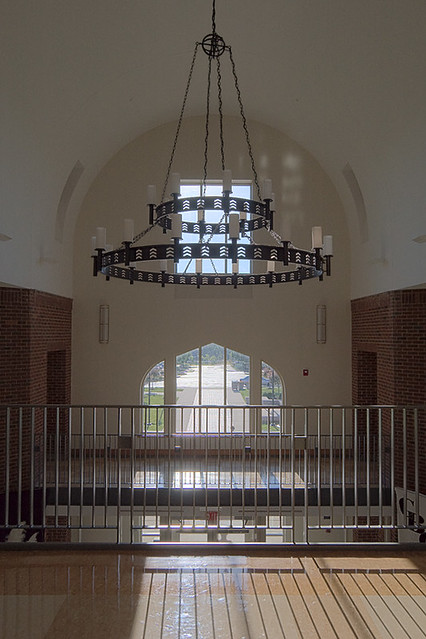
In the foyer. Note the chevrons in the chandelier: the chevron and the five-pointed star were on the de la Salle family crest, and now are symbols used by Institute of the Brothers of the Christian Schools.
In Latin, the name of the Institute is Fratres Scholarum Christianarum, and so the Brothers use FSC after their names. Their headquarters is in Rome, Italy, on the Via Aurelia, about a mile west of Vatican City.
According to the Institute's website: “The De La Salle Christian Brothers, assisted by more than 100.000 lay colleagues, teach over 1.000.000 students in 82 countries.”
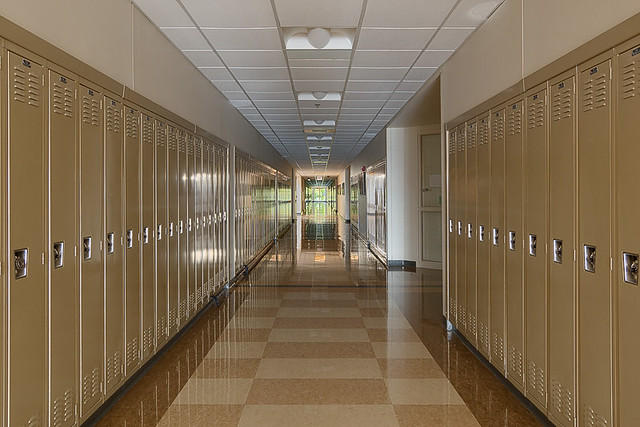
A typical American high school — long corridors, lined with lockers.
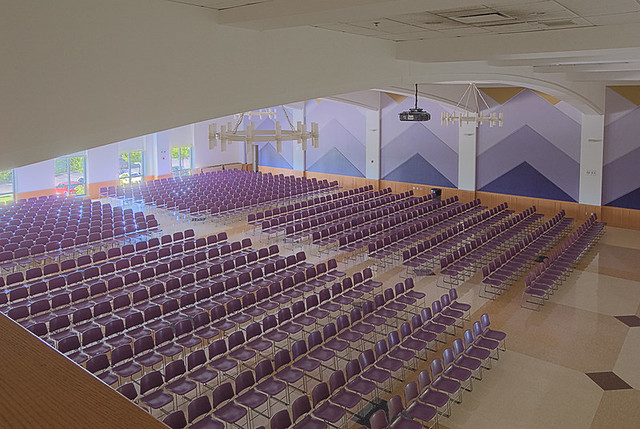
The auditorium.
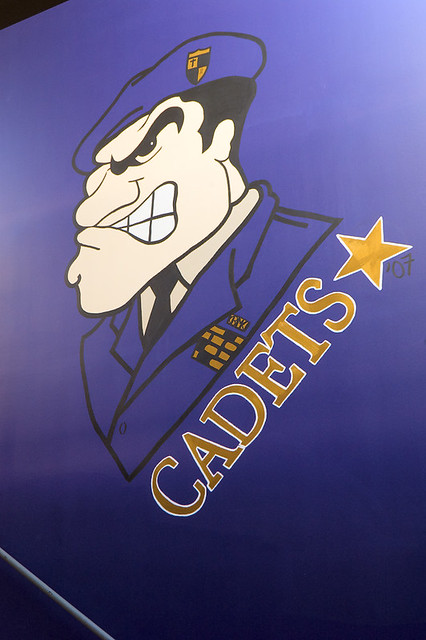
At one time, all of CBC's students were enrolled in JROTC — the Junior Reserve Officer Training Corps. That ended in the 1970s, but the symbolism remains. CBC had the reputation of being a tough, disciplined Irish school, and is still highly esteemed today by parents and students.
CBC's colors are purple and gold. My high school's colors were also purple and gold, and so we had a fierce rivalry!
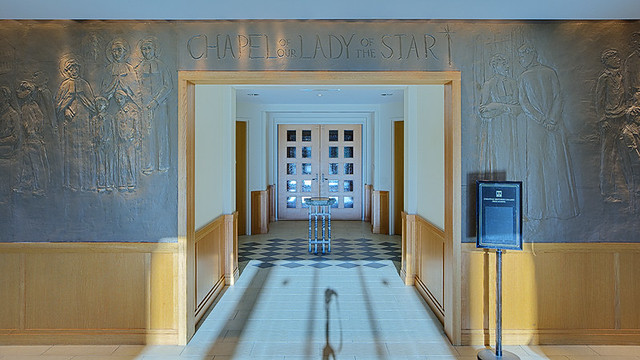
The heart of the school is the chapel, named in honor of the Blessed Virgin Mary under her title Our Lady of the Star.
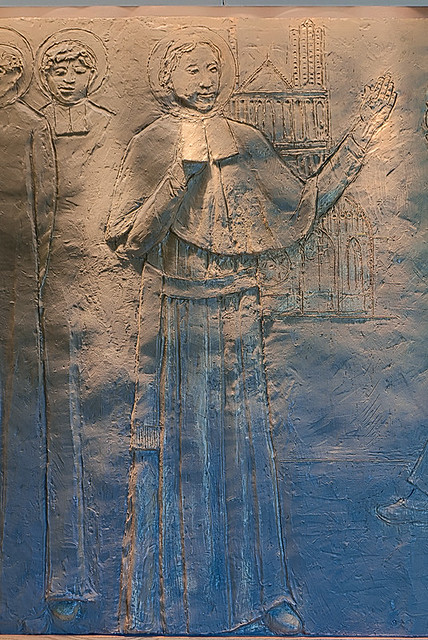
A detail of the carvings outside of the chapel, showing Saint Jean-Baptiste de la Salle.
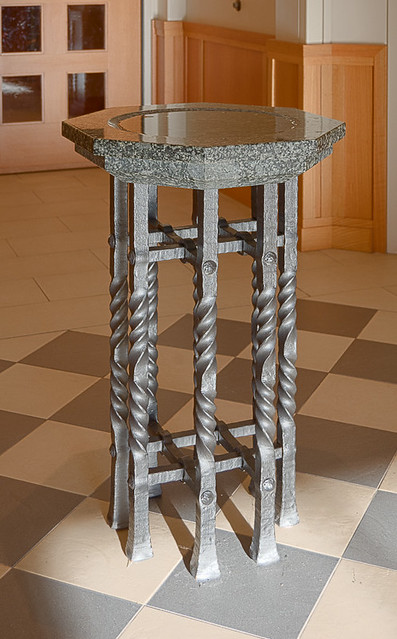
Holy water font, located at the entrance to the chapel.
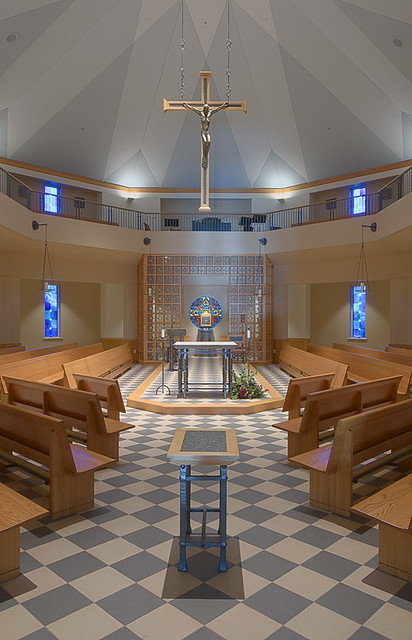
Interior of the chapel. Many thanks to Father Matthew O'Toole, Chaplain, who invited me to the school and gave me a tour. The chapel was designed by Brother William Woeger, F.S.C., alumnus of Bishop du Bourg High School and Saint Louis University, and now of the Archdiocese of Omaha.
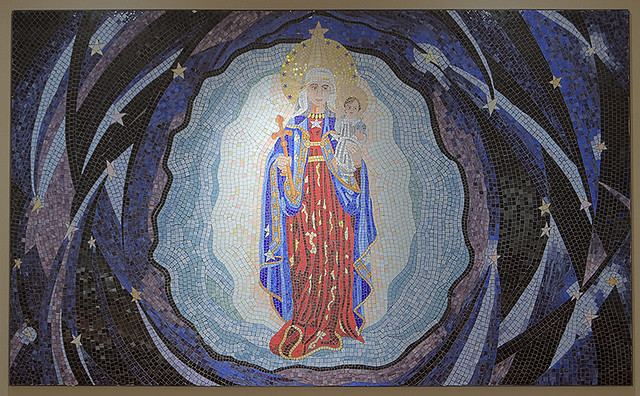
Mosaic of Our Lady with the Christ Child, surrounded with stars.
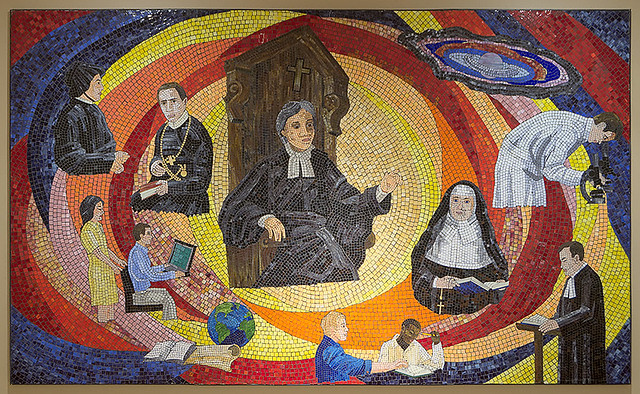
Historical mosaic, with de la Salle in the center.
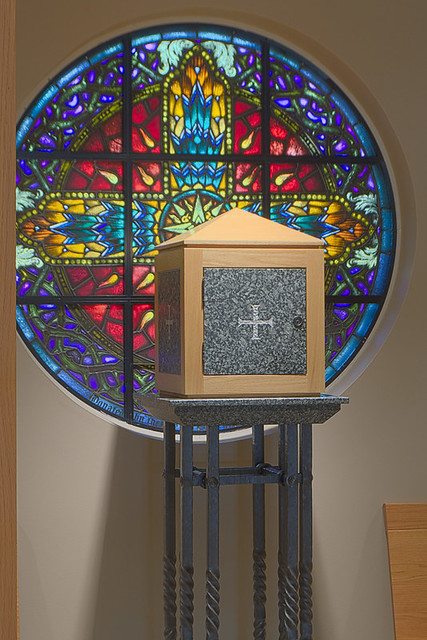
Tabernacle of the Blessed Sacrament. Behind is a stained glass window from the chapel of the old Clayton school.
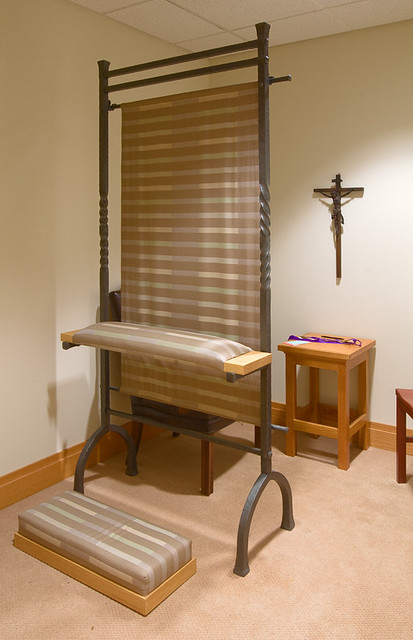
Confessional.
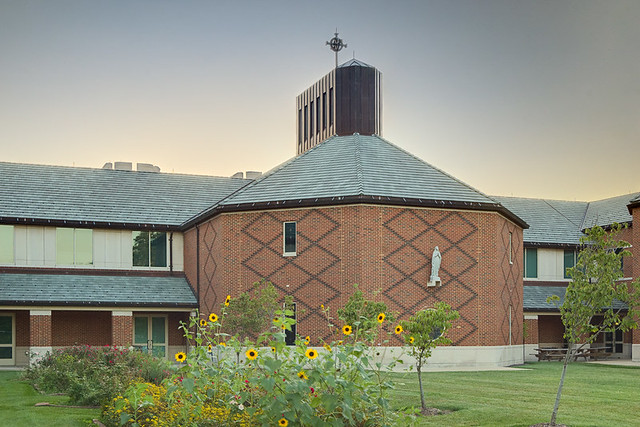
The view of the chapel from the outside.
Address:
1850 De La Salle Drive
Town and Country, Missouri 63141


No comments:
Post a Comment